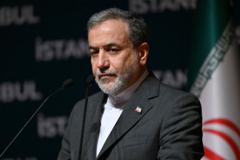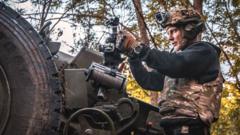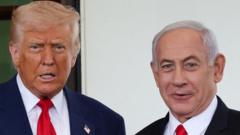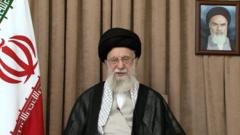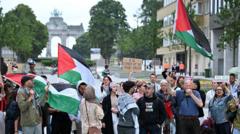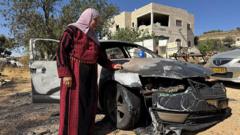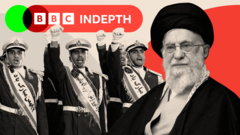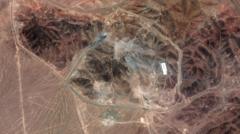Tehran's vibrant cafes and bustling streets return to life, but the emotional scars of recent violence and uncertainty loom large over its citizens.
**Tehran's Resilience Amidst Uncertainty: A City Gripped by Tension**
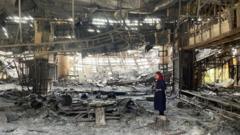
**Tehran's Resilience Amidst Uncertainty: A City Gripped by Tension**
Residents of the Iranian capital grapple with fear and anxiety as life slowly resumes in the shadow of conflict.
In the heart of Tehran, life is cautiously returning to the bustling capital, but the shadows of recent turmoil cast a long and anxious presence over its residents. The Boof cafe, nestled in the once-closed US embassy grounds, stands as a poignant symbol of this delicate rebirth. The barista, Amir, serves homemade iced Americanos, wishing for improved relations between the US and Iran, highlighting how sanctions have deeply affected their livelihoods.
As two tables showcase contrasting views—one occupied by a woman in traditional attire, another by a more liberally dressed couple—this divide portrays a city grappling with its identity and uncertain future. Supreme Leader Ayatollah Ali Khamenei’s recent speech only intensified these fears; he accused the US of wanting Iran to surrender amidst the backdrop of escalating turmoil triggered by recent Israeli strikes.
Israel's precision targeting of Iranian nuclear and military sites this month, which included a devastating blow to the IRIB state TV compound, has sparked widespread panic. A nurse at the Taleghani General hospital, Ashraf Barghi, shared haunting memories from her decades of service, now overshadowed by the trauma of treating injuries worse than those from the Iran-Iraq war. Residents express a palpable worry of renewed attacks, while the government estimates the recent conflicts have claimed 627 lives and injured nearly 5,000 individuals.
Despite these dire circumstances, Tehran's streets start to fill again. The daily hustle resumes, shops begin to reopen, and life appears to regain its rhythm as people return from safe havens. However, the emotional devastation remains evident, with citizens, like the young woman Mina, voicing their heartbreak and desperation for a brighter future—a stark contrast to the recent lively open-air concerts celebrating their national pride.
As diverse voices mingle, expressing both support and dissent towards the clerical regime, they collectively seek greater freedoms and a clearer discussion with their leaders. The vague whispers of change and hope for better relations signifies a yearning for stability amid the chaos, as Iranians wait for the future to unfold, with their lives remarkably at the mercy of larger geopolitical forces.
Foreign correspondents like Lyse Doucet navigate these complex terrains under strict regulations from Iranian authorities, reporting on a nation at a crossroads. As Khamenei prepares to re-emerge, he will find a populace eager for change amid persistent fears of conflict.
As two tables showcase contrasting views—one occupied by a woman in traditional attire, another by a more liberally dressed couple—this divide portrays a city grappling with its identity and uncertain future. Supreme Leader Ayatollah Ali Khamenei’s recent speech only intensified these fears; he accused the US of wanting Iran to surrender amidst the backdrop of escalating turmoil triggered by recent Israeli strikes.
Israel's precision targeting of Iranian nuclear and military sites this month, which included a devastating blow to the IRIB state TV compound, has sparked widespread panic. A nurse at the Taleghani General hospital, Ashraf Barghi, shared haunting memories from her decades of service, now overshadowed by the trauma of treating injuries worse than those from the Iran-Iraq war. Residents express a palpable worry of renewed attacks, while the government estimates the recent conflicts have claimed 627 lives and injured nearly 5,000 individuals.
Despite these dire circumstances, Tehran's streets start to fill again. The daily hustle resumes, shops begin to reopen, and life appears to regain its rhythm as people return from safe havens. However, the emotional devastation remains evident, with citizens, like the young woman Mina, voicing their heartbreak and desperation for a brighter future—a stark contrast to the recent lively open-air concerts celebrating their national pride.
As diverse voices mingle, expressing both support and dissent towards the clerical regime, they collectively seek greater freedoms and a clearer discussion with their leaders. The vague whispers of change and hope for better relations signifies a yearning for stability amid the chaos, as Iranians wait for the future to unfold, with their lives remarkably at the mercy of larger geopolitical forces.
Foreign correspondents like Lyse Doucet navigate these complex terrains under strict regulations from Iranian authorities, reporting on a nation at a crossroads. As Khamenei prepares to re-emerge, he will find a populace eager for change amid persistent fears of conflict.

